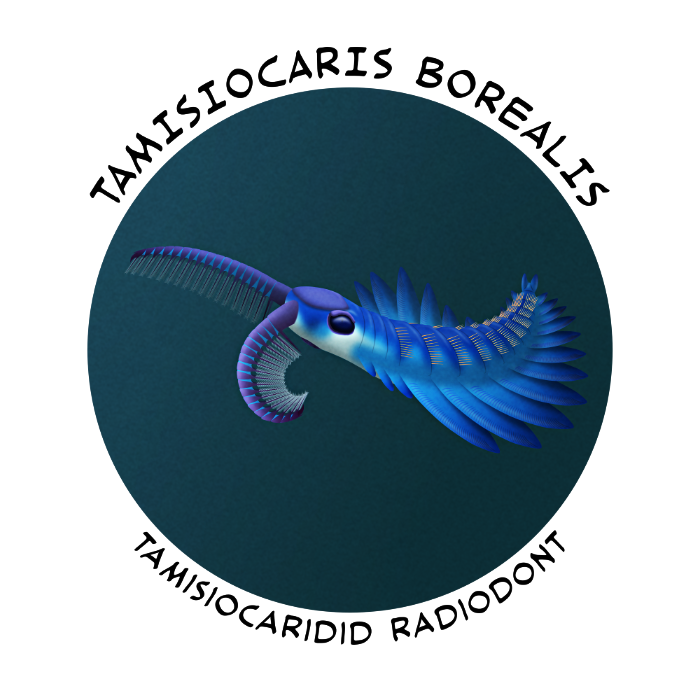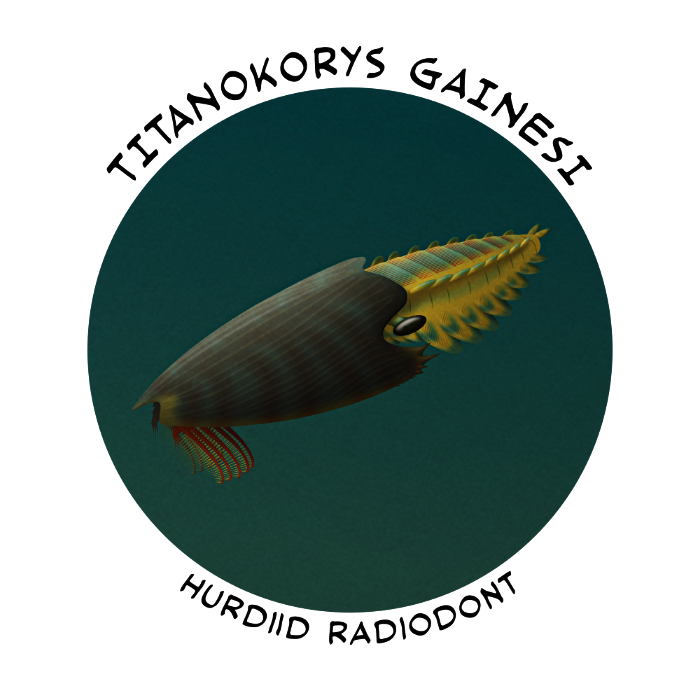The most famous radiodont is the classic charismatic Anomalocaris, but there were plenty of other members of the group who explored very different lifestyles. Instead of big apex predators, some of them became equally large filter feeders – the whales of the Cambrian.

Tamisiocaris borealis was discovered in the Sirius Passet fossil deposits in Greenland (~518 million years ago). Known only from its front appendages and head shield, its full life appearance and size is unknown but it’s estimated to have been between 35 and 70cm long (1’2″-2’4″).
Amazingly the existence of this radiodont was actually predicted by a piece of speculative evolution artwork about a year before the discovery of its filter-feeding habits was published.
Its front appendages bore long pairs of spines, each covered in densely-packed bristles that would have functioned like sweeping nets, capturing numerous small planktonic animals from the water and bringing them close to its mouth so it could suck them in.
The eyes in this reconstruction are based on “Anomalocaris” briggsi, a closely related species that wasn’t actually an Anomalocaris but hasn’t been given its own genus name yet. Surprisingly for a radiodont it had unstalked eyes with vision adapted for low-light conditions, suggesting that it may have vertically migrated, spending daytime in the deeper twilight zone and moving up near the surface to feed on swarms of zooplankton at night.
Along with the recently-named Houcaris these unusual radiodonts make up the tamisiocaridid family, and like their cousins the anomalocaridids and amplectobeluids they seem to have been primarily restricted to the warm waters of tropical and subtropical regions. They were also a much shorter-lived lineage, only known from the “series 2” division of the mid-Cambrian between about 518 and 512 million years ago – and they were probably among the casualties of the end-Botomian mass extinction, when widespread anoxic conditions would have severely disrupted the complex planktonic food webs they depended on.
The final major branch of the radiodonts were the hurdiids, with fossils of this group known from all around the world.
They were characterized by their enormous head carapaces, sometimes so big compared to the rest of their bodies that they were little more than “swimming heads”, and some species had two pairs of flaps on each body segment. Their front appendages were also uniquely shaped, with only a few of the segments each bearing a single massive spine lined with bristles. These spines usually curved inwards, creating a large “basket” that would have been used to capture small prey.

Titanokorys gainesi was a hurdiid recently described from the Canadian Burgess Shale deposits (~508 million years ago). Known from 12 specimens, it was one of the largest animals in that ecosystem rivalling its cousin Anomalocaris at around 50cm long (1’8″).
Its huge carapace’s streamlined spaceship-like shape led to it being nicknamed “the mothership”, and the huge structure may have been used like a plough, shoving through seafloor sediment and sifting around with its front appendages to rake up all the small soft-bodied burrowing animals it uncovered.
Hurdiids were far more tolerant of low temperatures than their tropical relatives, found throughout the seas of the Cambrian southern hemisphere all the way into cold-temperate and subpolar waters. And this ultimately allowed them to outlast all the other radiodonts by far and survive throughout the first half of the Paleozoic Era – in the early Ordovician (~480 million years ago) the gigantic filter-feeding Aegirocassis reached sizes of around 2m long (6’6″), making it both one of the biggest animals in the world at the time and one of the largest panarthropods to ever live, while the last known hurdiid (and the last ever known radiodont) was Schinderhannes from the early Devonian of Germany (~400 million years ago).
